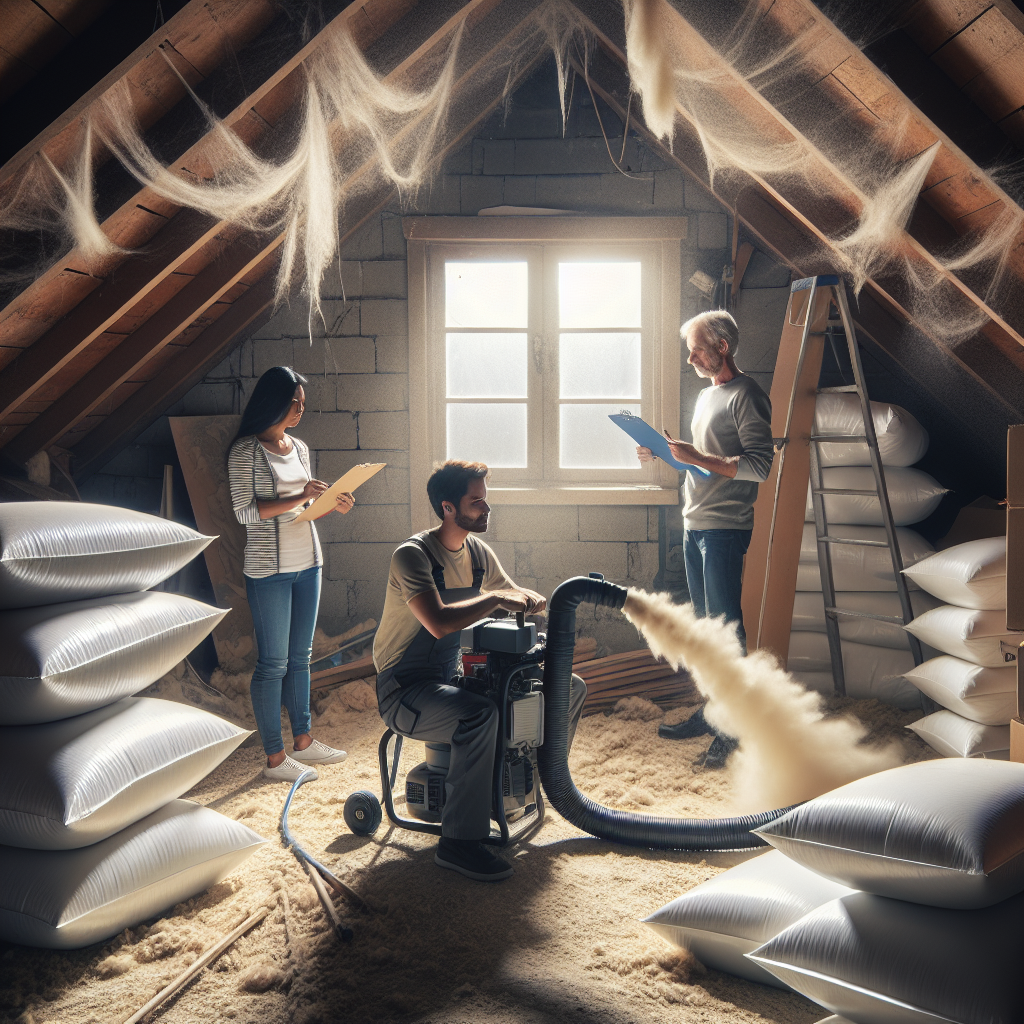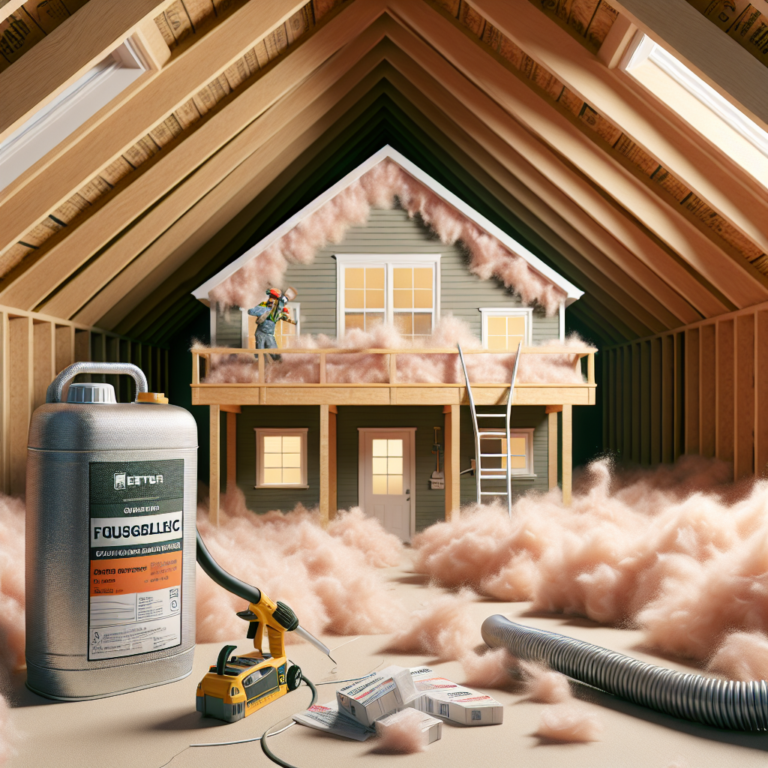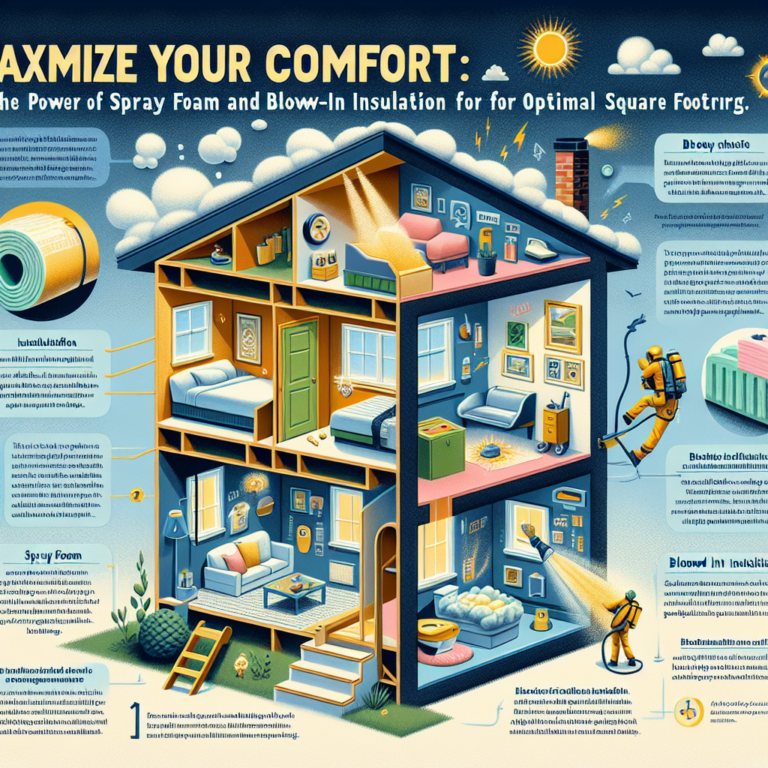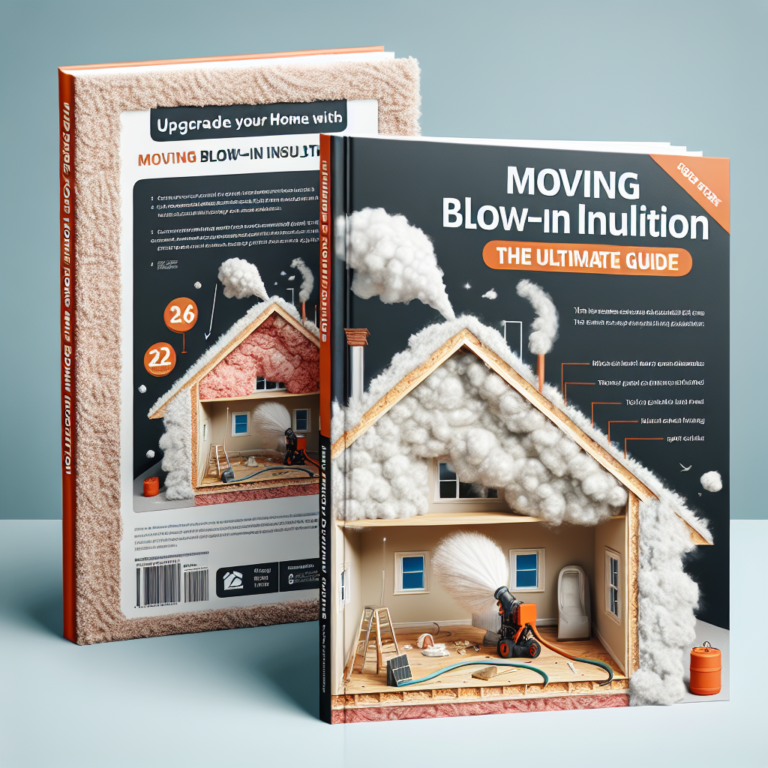-
Table of Contents
- Introduction
- The Cost-Effectiveness of Blown-In Attic Insulation: A Comparison to Traditional Insulation Methods
- Maximizing Energy Efficiency with Blown-In Attic Insulation: Benefits and Savings
- Factors Affecting the Price of Blown-In Attic Insulation: Understanding the Investment for Long-Term Savings
- Q&A
- Conclusion
“Efficiently insulate your space with blown-in insulation – the smart choice for comfort and savings.”
Introduction
Expanding blown-in insulation is a popular method of insulating homes and buildings. It involves using a special machine to blow loose insulation material, such as fiberglass or cellulose, into walls, attics, and other spaces. This method is known for its effectiveness in filling small gaps and crevices, providing a more complete and thorough insulation solution. In this introduction, we will explore the benefits and process of expanding blown-in insulation.
The Cost-Effectiveness of Blown-In Attic Insulation: A Comparison to Traditional Insulation Methods
Blown-in insulation has become a popular choice for homeowners looking to improve the energy efficiency of their homes. This type of insulation involves using a machine to blow loose insulation material, such as fiberglass or cellulose, into the attic space. It is a quick and efficient method that can provide significant benefits, including improved energy efficiency and cost savings. In this article, we will explore the cost-effectiveness of blown-in attic insulation and compare it to traditional insulation methods.
One of the main advantages of blown-in insulation is its cost-effectiveness. When compared to traditional insulation methods, such as batt or roll insulation, blown-in insulation is often more affordable. This is because it requires less labor and materials to install. With traditional insulation, installers must measure and cut each piece to fit the specific area, which can be time-consuming and labor-intensive. In contrast, blown-in insulation can be quickly and easily installed with the use of a machine, reducing the overall cost of installation.
Additionally, blown-in insulation can provide significant cost savings in the long run. This is due to its superior energy efficiency. The loose insulation material is able to fill in gaps and crevices, creating a more airtight seal than traditional insulation methods. This means that less air can escape from the attic, resulting in lower energy bills. In fact, according to the Department of Energy, homeowners can save up to 20% on heating and cooling costs by properly insulating their attics.
Another factor to consider when looking at the cost-effectiveness of blown-in insulation is its longevity. Unlike traditional insulation methods, which can compress and lose effectiveness over time, blown-in insulation maintains its R-value (a measure of insulation’s ability to resist heat flow) for many years. This means that homeowners will not have to replace or add more insulation as frequently, resulting in long-term cost savings.
In addition to its cost-effectiveness, blown-in insulation also offers other benefits. For example, it is a more environmentally friendly option compared to traditional insulation methods. The loose insulation material is often made from recycled materials, reducing the amount of waste that ends up in landfills. Furthermore, blown-in insulation can also improve indoor air quality by reducing the amount of dust and allergens that can enter the home through the attic.
When considering the cost-effectiveness of blown-in insulation, it is important to also look at the potential return on investment. While the initial cost of installation may be higher than traditional insulation methods, the long-term savings on energy bills can make it a worthwhile investment. Additionally, blown-in insulation can also increase the value of a home. According to a study by the National Association of Realtors, homeowners can expect to recoup 107% of the cost of blown-in insulation when selling their home.
It is also worth noting that the cost-effectiveness of blown-in insulation can vary depending on the size and layout of the attic, as well as the type of insulation material used. It is important to consult with a professional insulation contractor to determine the best option for your specific home and budget.
In conclusion, blown-in attic insulation offers a cost-effective solution for homeowners looking to improve the energy efficiency of their homes. Its affordability, long-term cost savings, and other benefits make it a popular choice among homeowners. When considering insulation options, it is important to weigh the initial cost against the potential long-term savings and return on investment. With its many advantages, blown-in insulation is a smart choice for homeowners looking to improve the comfort and efficiency of their homes.
Maximizing Energy Efficiency with Blown-In Attic Insulation: Benefits and Savings

As homeowners become increasingly aware of the importance of energy efficiency, many are looking for ways to reduce their energy consumption and save money on utility bills. One effective way to achieve this is by adding insulation to the attic, which can prevent heat loss and keep the home at a comfortable temperature. While traditional batt insulation has been the go-to option for many years, blown-in insulation is gaining popularity due to its many benefits and cost-saving potential.
Blown-in insulation, also known as loose-fill insulation, is made up of small particles of materials such as fiberglass, cellulose, or mineral wool. These particles are blown into the attic using specialized equipment, filling in any gaps and creating a seamless layer of insulation. This method allows for a more thorough and even distribution of insulation, making it a more efficient option compared to batt insulation.
One of the main benefits of blown-in insulation is its ability to expand and fill in tight spaces. This makes it ideal for attics with irregular shapes or hard-to-reach areas. The particles can easily conform to any shape, ensuring that every nook and cranny is covered. This also means that there are no gaps or spaces left uncovered, which can be a common issue with batt insulation. As a result, blown-in insulation provides better overall coverage and can improve the energy efficiency of a home.
Another advantage of blown-in insulation is its higher R-value compared to batt insulation. R-value is a measure of an insulation material’s ability to resist heat flow, with a higher R-value indicating better insulation. Blown-in insulation has a higher R-value per inch, meaning that a thicker layer is not necessary to achieve the same level of insulation as batt insulation. This can be particularly beneficial for homes with limited attic space, as it allows for maximum insulation without taking up too much room.
In addition to its superior insulation properties, blown-in insulation also has a longer lifespan compared to batt insulation. While batt insulation can become compressed over time, reducing its effectiveness, blown-in insulation maintains its shape and density for longer periods. This means that homeowners can enjoy the benefits of blown-in insulation for many years without worrying about the need for replacement or maintenance.
Aside from its practical benefits, blown-in insulation can also lead to significant cost savings for homeowners. By improving the energy efficiency of a home, blown-in insulation can reduce heating and cooling costs. This is especially true in regions with extreme temperatures, where the HVAC system has to work harder to maintain a comfortable indoor temperature. With blown-in insulation, the HVAC system can operate more efficiently, resulting in lower energy bills.
Moreover, blown-in insulation is a cost-effective option compared to other types of insulation. Its installation process is relatively quick and straightforward, which can save on labor costs. Additionally, the materials used for blown-in insulation are often less expensive than those used for batt insulation, making it a more budget-friendly option for homeowners.
In conclusion, blown-in insulation offers numerous benefits for homeowners looking to maximize energy efficiency and save on utility bills. Its ability to expand and fill in tight spaces, higher R-value, longer lifespan, and cost-effectiveness make it a superior option to batt insulation. By investing in blown-in insulation for the attic, homeowners can enjoy a more comfortable and energy-efficient home while also reducing their carbon footprint.
Factors Affecting the Price of Blown-In Attic Insulation: Understanding the Investment for Long-Term Savings
Blown-in insulation is a popular choice for homeowners looking to improve the energy efficiency of their homes. This type of insulation is made up of loose fibers, typically made of materials such as fiberglass, cellulose, or mineral wool, that are blown into the attic space using specialized equipment. It is a cost-effective and efficient way to insulate your attic, helping to keep your home warm in the winter and cool in the summer. However, the price of blown-in insulation can vary depending on a number of factors. In this article, we will explore the different factors that can affect the price of blown-in attic insulation and help you understand the investment for long-term savings.
One of the main factors that can affect the price of blown-in insulation is the type of material used. Fiberglass insulation is the most commonly used material for blown-in insulation and is generally the most affordable option. Cellulose insulation, made from recycled paper, is slightly more expensive but offers better insulation properties. Mineral wool, made from natural or synthetic minerals, is the most expensive option but also provides the highest level of insulation. The type of material you choose will depend on your budget and the level of insulation you require for your home.
Another factor that can affect the price of blown-in insulation is the size of your attic. The larger the attic space, the more material will be needed to properly insulate it. This means that the cost of blown-in insulation will increase for larger homes. Additionally, if your attic has any unique features such as dormer windows or skylights, it may require more material and labor to properly insulate these areas, resulting in a higher cost.
The condition of your attic can also impact the price of blown-in insulation. If your attic has existing insulation that needs to be removed, this will add to the cost of the project. The condition of your attic space can also affect the ease of installation. If your attic is difficult to access or has obstructions such as ductwork or wiring, it may require more time and labor to properly install the blown-in insulation, resulting in a higher cost.
The location of your home can also play a role in the price of blown-in insulation. The cost of materials and labor can vary depending on where you live. For example, if you live in a remote area, the cost of transporting materials and equipment to your home may be higher, resulting in a higher overall cost for blown-in insulation. Additionally, if you live in an area with a high cost of living, the labor costs for the installation may be higher, impacting the overall price of the project.
It is important to note that while blown-in insulation may have a higher upfront cost compared to other types of insulation, it can provide long-term savings. Properly insulating your attic can significantly reduce your energy bills by keeping your home at a comfortable temperature without relying on heating or cooling systems. This can result in significant savings over time, making the initial investment in blown-in insulation worth it.
In conclusion, there are several factors that can affect the price of blown-in attic insulation. The type of material used, the size and condition of your attic, the location of your home, and the labor costs can all impact the overall cost of the project. While blown-in insulation may have a higher upfront cost, it can provide long-term savings by improving the energy efficiency of your home. It is important to carefully consider these factors and consult with a professional to determine the best option for your home and budget. With proper installation and maintenance, blown-in insulation can be a valuable investment for long-term savings.
Q&A
1) What is blown in insulation?
Blown in insulation is a type of insulation material that is installed by blowing it into the desired space using specialized equipment. It is typically made of materials such as fiberglass, cellulose, or mineral wool and is used to improve the energy efficiency and comfort of a building.
2) How does blown in insulation compare to other types of insulation?
Blown in insulation has several advantages over other types of insulation. It can be installed quickly and easily, even in hard-to-reach areas, and can conform to irregular spaces. It also has a high R-value, meaning it provides excellent thermal resistance. Additionally, blown in insulation is often more cost-effective than other types of insulation.
3) What are the benefits of expanding blown in insulation?
Expanding blown in insulation, also known as spray foam insulation, has several benefits. It provides a superior air seal, reducing air leakage and improving energy efficiency. It also has a high R-value and can be installed in small or hard-to-reach spaces. Additionally, spray foam insulation can help reduce noise transmission and is resistant to mold and pests.
Conclusion
In conclusion, expanding blown in insulation is a highly effective and efficient method for insulating homes and buildings. It offers numerous benefits such as improved energy efficiency, reduced utility costs, and increased comfort. Additionally, it is a versatile option that can be used in various types of structures and can easily fill in small and hard-to-reach spaces. With its ease of installation and long-lasting performance, expanding blown in insulation is a great choice for anyone looking to improve the insulation of their property. It is a cost-effective and environmentally friendly solution that can greatly enhance the overall energy efficiency and comfort of a building.




